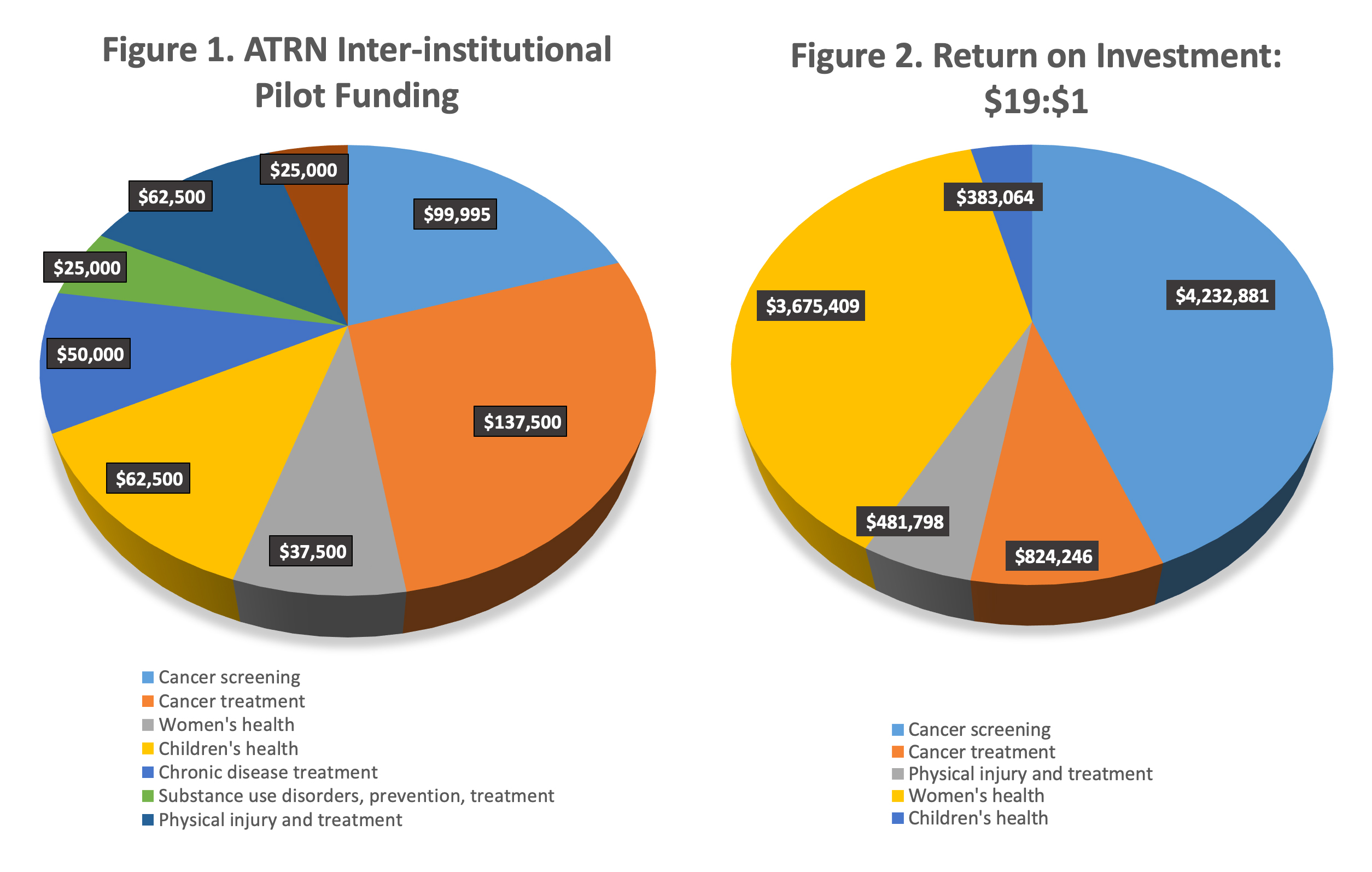The Appalachian Translational Research Network
Overview of The Appalachian Translational Research Network
Introduction
The Appalachian region encompasses 205,000 square miles with more than 25 million residents. The region stretches from New York to Mississippi, including all of West Virginia and parts of Alabama, Georgia, Kentucky, Maryland, North Carolina, Ohio, Pennsylvania, South Carolina, Tennessee and Virginia. Nearly half of the region is rural, and many rural Appalachian counties experience severe hardship, including high rates of poverty, high unemployment, struggling educational systems and limited health infrastructure.1 Coinciding with these hardships are health outcomes that are among the worst in the nation. Appalachian communities have the highest rates of mortality in the United States for seven of the 10 leading causes of death—heart disease, cancer, chronic obstructive pulmonary disease, injury, stroke, diabetes and suicide—not to mention the highest rates of death due to drug overdose.1,2 Although residents of most U.S. counties have experienced an increase in life expectancy in recent decades, this has not been the case in many Appalachian counties. In fact, since 1980 there has been a decrease in life expectancy for residents of Central Appalachian Kentucky.
Recognizing that a team approach was critical to addressing the significant health challenges of their respective Appalachian populations, the Clinical and Translational Science Awards (CTSA) Program hubs of the University of Kentucky and The Ohio State University formed the Appalachian Translational Research Network (ATRN) in 2010. The ATRN has since expanded to include CTSA Program hubs from the University of Cincinnati, Pennsylvania State University, Wake Forest University, University of Virginia and University of Pittsburgh, as well as West Virginia University, which is funded with an Institutional Development Award for Clinical and Translational Research (IDeA-CTR) from the National Institute of General Medical Sciences (NIGMS). Two CTSA-affiliated universities, Marshall University and Ohio University, are also ATRN members. Currently representing ten member institutions from across multiple states, the ATRN continues to expand its membership with the goal of having representation from universities across the expanse of Appalachia.
Inter-Institutional Dissemination
Under the guidance of an executive leadership team and with representation from each member institution, the ATRN facilitates inter-institutional sharing of research expertise, experiences and resources to promote improved health in Appalachian communities. To support synergy, the leadership team meets monthly to share general information and plan future collaborations. A quarterly ATRN newsletter is published and disseminated widely to anyone with interest who signs up to receive it, regardless of institutional affiliation. The newsletter serves to spotlight ATRN members’ research activities, funding opportunities, and inter-institutional training and seminar opportunities. Each newsletter also showcases community partners.
Annual Health Summit
The Network also holds an Annual Health Summit, which is hosted by a different member institution each year. The Summit provides a venue for disseminating findings from scientific investigations supported through the ATRN, as well as other research relevant to Appalachia. The Summit provides a forum for investigators and community members to network and disseminate information and evidence relevant to the health of their communities. Another key component of the Summit is the opportunity for scientific development: students and early career investigators across the member institutions are encouraged to present their research that’s relevant to Appalachian health issues and receive feedback and guidance from more seasoned investigators.
Pilot Program
The Network also runs an inter-institutional pilot program. With funding provided by ATRN member institutions, to the annual pilot program supports collaborative research involving investigators from two or more ATRN institutions. The program has funded multiple studies over the years, resulting in a return on investment of $19:$1 (Figures 1 and 2). More recently, a Community-Academic Partnership pilot program has been implemented to support research that engages investigators from two or more ATRN member institutions in partnership with community organizations from their respective sites.
Pivotal to the success of the ATRN is the support provided by NCATS, NIGMS, and the principal investigators of the member CTSA and IdeA-CTR universities. As a result of this support, the ATRN is able to promote research collaborations and to enhance synergy across ATRN institutions to positively impact health across Appalachia.
For more information about the ATRN, please contact ATRN Leadership.
References
1 PDA, Inc., The Cecil G. Sheps Center for Health Services Research, and the Appalachian Regional Commission. Health Disparities in Appalachia. Published August 2017. www.arc.gov/assets/research_reports/Health_Disparities_in_Appalachia_August_2017.pdf. Accessed October 1, 2019.
2 East Tennessee State University and NORC at the University of Chicago. Issue Brief: Health Disparities Related to Opioid Misuse in Appalachia. Practical Strategies and Recommendations for Communities. Published April 2019. www.arc.gov/assets/research_reports/HealthDisparitiesRelatedtoOpioidMisuseinAppalachiaApr2019.pdf. Accessed October 1, 2019
ATRN Interinstitutional Pilot Funding and Return on Investment Tables



